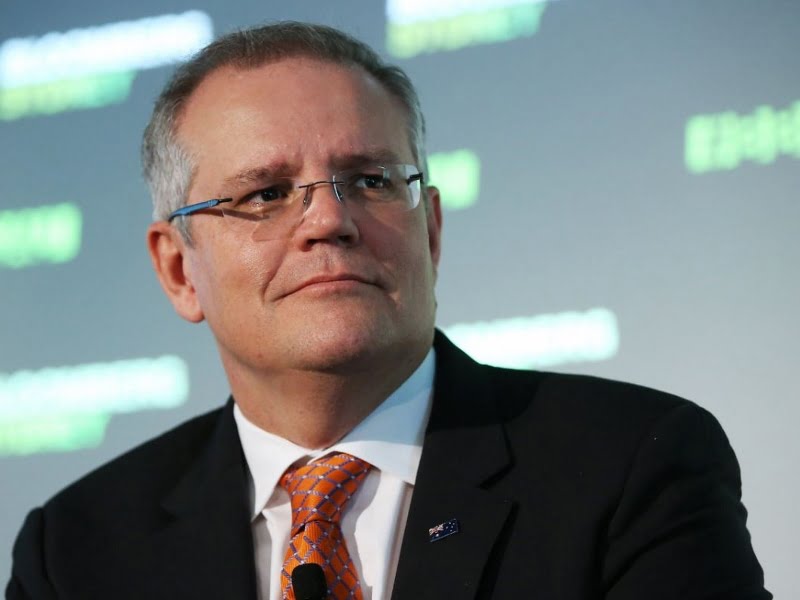Billed as a jobs and growth budget, for Australia’s innovators, it is a Jekyll and Hyde affair.
Yes, the government wants to spruce up the economy with shiny Dr Jekyll initiatives, such as paying for its National Innovation Strategy and STEM education initiatives.
But Mr Hyde, in the form of budget deficits and uncertain economic outlook reinforced by the Reserve Bank’s surprise cut to the cash rate on budget day, is also having an impact.

The majority of initiatives announced in the budget that affect technology businesses and start ups have already been well telegraphed. It was a day for detail rather than budget bravado.
Tax reform is the central plank of the 2016-17 budget, with the so-called Google tax introduced along with a sliding corporate tax rate that should deliver modest comfort for local innovators until the end of the decade.
The challenge that this government faces in this pre-election affair is that it needs to fund innovation initiatives that will allow Australia’s economy to transition from resources and to the new economy.
Just as Gartner has been preaching bi-modal IT – managing legacy while investing in the future – the Treasurer has been faced with a similar challenge, and he acknowledged that “What we are doing in this budget is what we can afford.”
And it’s not that much – a fact that was subtly reinforced by the Reserve Bank’s decision to lower the cash rate by 25 basis points on Budget Day.
This is a budget to take to the electorate. If the Government is re-elected, it will likely use that mandate to be far bolder at the next Budget.
On the tax front, from July, all organisations with turnovers of up to $10 million will have their tax rate reduced to 27.5 per cent – which the Treasurer said would impact 870,000 businesses.
Over coming years; “We will continue to step up the turnover threshold for access to the lower company tax rate of 27.5 per cent for more businesses, from $10 million to $25 million in 2017-18, to $50 million in 2018-19 and $100 million in 2019 in 2019-20.”
Phase two of what the Treasurer dubbed his “ten year enterprise tax plan” will push out that threshold, and reduce the tax rate, so that by 2026-27 the company tax rate will fall to 25 per cent for all businesses.
For nimble start ups which can locate internationally it’s a long wait to benefit from a still higher corporate tax rate than they would face in countries such as Ireland, the UK or Singapore.
It’s why Australian companies like Atlassian and Nitro have already offshored much of their activity and headquarters.
The Government will have to wait and see whether its measures will staunch the flow of tech hopefuls to lower taking overseas markets.
The treasurer acknowledged Australia currently has the seventh highest company tax rate in the OECD and a rate much higher than most Asian countries – he said that the reduction in the tax rate “will bring us back into the middle of the pack”.
There was one other small carrot for start ups and smaller business in the form of an extension of the small business scheme arrangement announced last year to allow small business to write off purchases of up to $20,000.
That has now been extended to companies with up to $10 million turnover – but they will have to act fast as the scheme’s sunset is still scheduled for June 2017.
The largesse extended to smaller companies in the form of the sliding tax system will cost the Government coffers $5.3 billion over the next four years .
It claims however that a renewed push to crack down on tax avoidance by multinationals, private companies and high net worth individuals will help balance out that reduction.
The Diverted Profits Tax (DTP) – or Google tax – will impose a penalty rate on large multinationals that attempt to shift profits offshore to avoid paying tax.
Treasury reckons DTP will net $650 million over four years.
That amount will just about cover the $679 million that the Government plans to spend over the same period setting up a 1,300 person Tax Avoidance taskforce within the ATO including 390 new specialised officers.
The Budget papers also flagged enhanced information sharing between ATO and ASIC to crack down on tax avoidance.
The Google tax is aimed at limiting tax avoidance by multinationals moving tax liabilities to low taxing jurisdictions such as Ireland or Singapore. The Treasurer said yesterday that the revenue raised would be “reinvested in easing the (tax) burden on SME companies.”
The Government took the first steps toward greater tax transparency in late 2015, passing legislation obliging large multinationals to open the tax kimono and reveal their true position.
The moves followed an extensive tax audit of 12 major technology companies by the ATO in 2015, Apple, Google and Microsoft among them.
In the UK a similar diverted profits tax netted the Government 130 million pounds sterling in back taxes from Google alone.
While arguments have been raised that the tax moves could lead to multinationals redirecting their local investment (such as it is) outside of Australia – in reality there is nowhere to go.
The OECD’s G20 programme to address base erosion and profit sharing (BEPS) means that other countries are also following Britain and Australia in ensuring (to borrow a Ruddism) everyone gets a fair suck of the sauce bottle.
Multinationals will have to suck it up.
It will make for an interesting initiation for newly appointed Google boss Jason Pellegrino who was this week named as the CEO of Google Australia, replacing Maile Carnegie who is moving to ANZ bank.
Do you know more? Contact James Riley via Email.

